The unlikely birth and untimely death of Buick’s two-seat Reatta
Buick’s first and only two-seater was conceived more than a decade before its birth. A new leadership team arrived at the brand in 1975 with direction to grow its product line, image, and sales. “I had specific ideas about what we wanted to do product-wise,” then-Buick chief engineer Lloyd Reuss told me in a 2005 interview. “Our volume was not where we wanted it to be, and we were too much like Oldsmobile. So there was a major decision to move away from Olds and more toward Cadillac. We wanted an upscale sportier image—call it sporty elegance.”
One “L-car” project pursued in 1977–78 explored the market potential of a sporty V-6-powered 2+2 coupe derived from the ho-hum subcompact J-car (Chevrolet Cavalier/Pontiac Sunbird/Oldsmobile Firenza/Buick Skylark) but more upscale, quicker, and better-handling. Among its targets were an eight-second run from 0–60 mph (very respectable at the time) and a 100,000-unit annual volume in Buick and Olds versions.
When that idea died for lack of a viable business case, however, Reuss shifted his sights to an upscale sporty two-seater. He proposed it to corporate leadership in 1978 but then was promoted to Chevrolet Division chief engineer.
When Reuss returned to Buick as general manager two years later, he pitched the idea again, this time with a plan worked up by Product Planning chief Jay Qualman and Strategic Planning manager Lynn Salata. The notion was to base it on a shortened front-drive “E-car” (Buick Riviera/Oldsmobile Toronado/Cadillac Eldorado) platform powered by a Riviera 3800 V-6. At a modest annual volume of 22,000 and a $20,500 price, the proposed project promised low investment cost and solid profit.
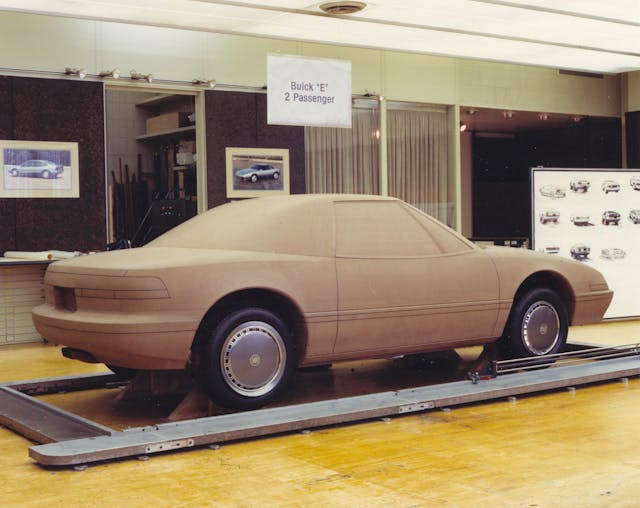
“We saw a good potential market for Buick in a car that had two seats, the styling of a sports car, and the comfort of a Riviera,” Qualman told Larry Gustin and Terry Dunham for their Automobile Quarterly book, The Buick, A Complete History. “If we could get the right combination of styling, comfort, handling, power, and price, we could virtually create a new niche in the market.”
GM’s Product Policy Group granted Concept Approval in August 1981 for a 1983 launch as an ’84 model. But a complex reorganization of GM’s five car divisions into Buick-Oldsmobile-Cadillac (BOC) and Chevrolet-Pontiac-Canada (CPC) “super” groups, plus engineering resource constraints and a decision to launch Cadillac’s two-seat Allanté first, delayed it by four-plus years.
Design

The Reatta’s styling effort began in July 1982. According to David North, who headed GM’s Advanced Design #2 studio at the time, GM designers were insulted that Cadillac had chosen to outsource its Allanté two-seater design to Italy’s Pininfarina. “So they said, ‘We’ll show ’em what we could have done,’ and held a contest. They had all the young designers propose a two-place car, and Dave McIntosh, who worked for me, won.”
Reuss loved the McIntosh model and wanted it for Buick’s two-seater. But it was “soft” and elliptical, while the E-car chassis was blunt. “They couldn’t modify the chassis,” North told us, “and it wouldn’t fit under the body. I went out to the Proving Grounds for a competitive product show, and the new Porsche 944 was there. Porsches were always rounded, soft cars, but that one had stiff lines on it. I went back to the studio and told one of the designers, Ted Pollack, to put creases on the Reatta, which ended up running the length of the car.” Another inspiration came from another Porsche: “One thing that made the 911 different,” he adds, “was the taillight that ran all the way across the back. So we did that on Reatta.”
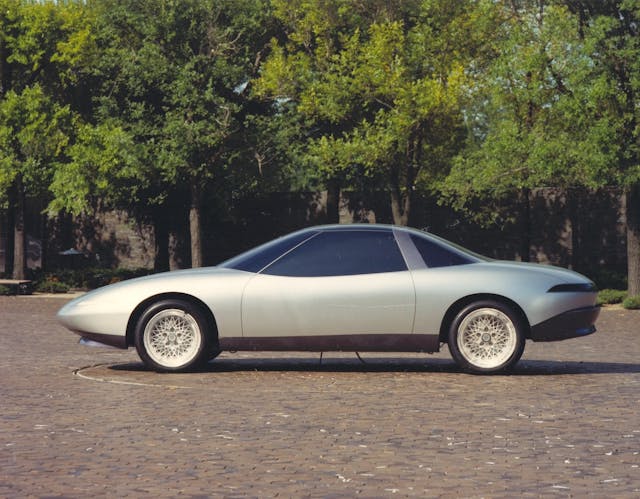
This design program was unique in that it started and stayed in the advanced studio instead of moving to a production studio once approved. And the need to fit its round-cornered body on the squared-off chassis resulted in a long overhang ahead of its front wheels.
Because he grew up on western ranches and remembered that the movie Giant took place on the Reata Ranch, North suggested the name “Reata,” a Spanish-American term for lariat. Lynn Salata added the second “t” because it looked better. When North was promoted to Chief Designer of Oldsmobile’s production studio, John K. (“Kip”) Wasenko took over the Advanced #2 studio and completed the production design.
Engineering
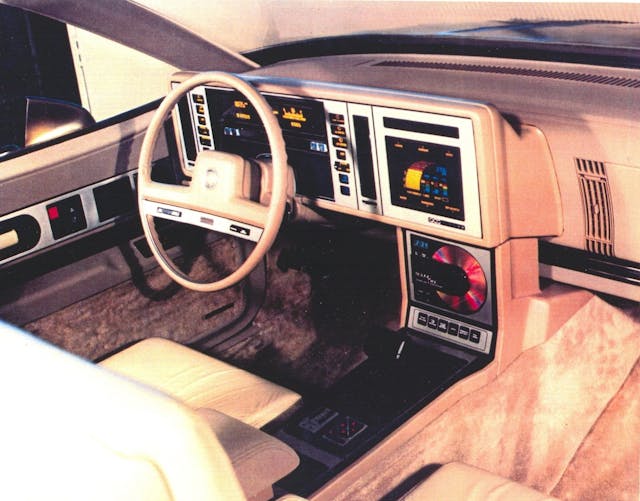
Reatta chief engineer Randy Wightman had a good platform and powertrain to start with, but the turmoil of GM’s massive 1984 reorganization, combined with an unusually high level of engineering activity industry wide at the time, made resources tight both inside and outside GM. So program manager Frank Colvin assembled a multinational consortium to get the Reatta done: England’s Hawtal-Whiting for product engineering and Lamb Sceptre for manufacturing engineering, Japan’s Ogihara Iron Works for die design and engineering.
Prototypes built by Aston Martin Tickford using body parts from Abbey Panels (both in England) were tested at GM’s U.K. Proving Ground. Dynamic development was done in the U.S. by Cadillac engineers because the program transferred (as Buick Engineering was folded into BOC in 1986–87) to Cadillac, which retained responsibility for its own as well as Buick’s and Olds’ E-cars. Among other good things, this development work resulted in some added engine compartment structure that made Reatta a crisper-cornering car than its Riviera parent.
Another major challenge was finding a facility and developing a process for building the car. The eventual answer was a dedicated “Craft Centre” in a 50-year-old former axle foundry and forging plant in Lansing, Michigan, where it would be virtually hand-built by groups of “craftspeople” working in “stations” instead of along a moving assembly line.
Birth
By the time Reatta was finally ready for a January 1988 launch, Reuss was heading up CPC, Ed Mertz (his former chief engineer) was Buick general manager and Qualman was advertising director under general Marketing manager Darwin Clark. The PR challenge was helping media understand that it was neither a sports car nor a Corvette-like performer but a Mercedes SL-like luxury two-seater. “The idea was that it would look sporty yet provide a more elegant driving impression,” remembers product PR manager at the time Larry Gustin. “You could drive it all day and be comfortable, and there was enough trunk space for a weekend or so.”
Except for the expected complaints on its CRT electronic control center touchpad instrument panel, which most writers already disliked in the Riviera, the reviews were mostly positive. “The rigidity of its body is noteworthy,” wrote Car and Driver’s Rich Ceppos. “Push the Reatta to its limit in a corner, and you’ll find that its grip is good, too. [It] actually moves along pretty well, posting a 0-60 time of 9.1 seconds and a top speed of 122 mph. Meanwhile, it keeps wind and mechanical noise commendably low.”
“We savored every minute in the Reatta’s saddle,” wrote Automobile’s John Phillips III. “Just as important, we admire Buick for the audacity to build this car.” Added Autoweek’s James D. Sawyer: “We are encouraged by what this car says about Buick and, by extension, General Motors. The Reatta is a car that delivers what it promises. It is an honest car. It feels of a piece.”
At a (higher than proposed) sticker of $25,000, it boasted nearly every conceivable feature as standard with the only options a power sunroof and a 16-way power driver’s seat. Just 4707 ’88 Reattas were built, followed by 7009 ’89s after a price boost to $26,700.
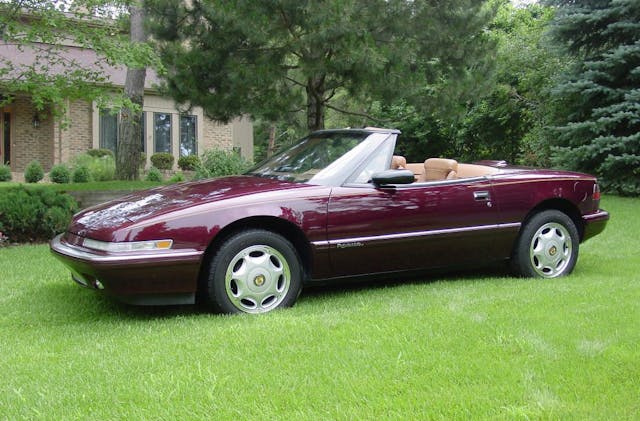
Model year 1990 brought a new instrument panel with electronic analogue gauges replacing the unloved CRT screen, and the long-awaited convertible (at a hefty $34,995). The ragtop Reatta drew media raves for beauty and character but brickbats for its somewhat shaky body and its manual top, a complex design that dropped into a well under a hard tonneau cover.
Because Buick’s upscale two-seater was proving a tough sell in a soft market unkind to impractical image cars in general, Clark commissioned a special task force to rethink its marketing, advertising, and promotion. “How do we focus on the target market differently?” he asked. “How do we tell a story that’s compelling enough to bring people in to test drive and hopefully buy the car?” Sales rose to 8515 (2132 of them convertibles) for 1990, but Reatta remained a major money loser despite another price increase to $28,335 for the coupe.
Further major improvements for ’91 included an updated 3800 V-6 with Tuned Port Injection (TPI) that helped improve its output from 165 to 170 hp, an electronically controlled four-speed automatic, larger wheels and tires, and (for the convertible) a power pull-down top and anti-shake add-ons. But just 1520 ’91 Reattas were built, 305 of them convertibles, before Reuss—by then president of the financially ailing General Motors—announced on March 5, 1991 that Buick’s two-seater was canceled and would (eventually) be replaced at the Lansing Craft Center by a high-tech electric vehicle (which emerged for 1997 as the GM EV1).
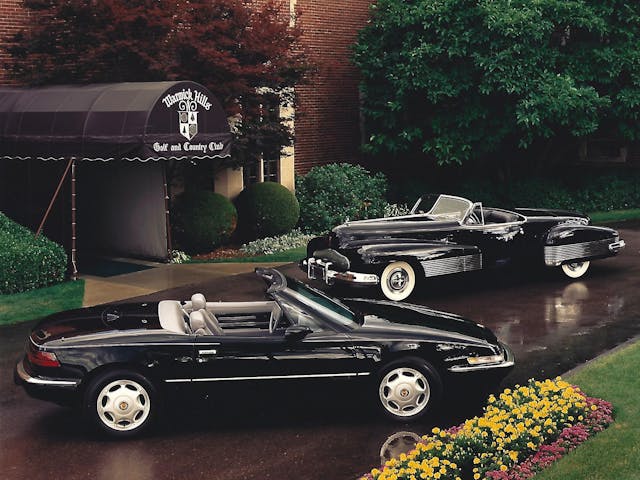
Mertz, who had overseen Reatta’s early development as Buick chief engineer, then launched it as general manager, had the unpleasant task of killing it early in just its fourth model year. “The early ’90s were tough for GM,” he related to us later. “J. T. Battenberg became head of BOC and, as GM’s financial difficulties mounted, he let us know that all vehicles needed to be profitable, ‘or else.’ We made a valiant effort to increase sales with some unique advertising, but I could see that it was a losing cause and recommended that we discontinue it … an emotional decision, but not a hard one, facing the facts.” Over its four model years, Reatta production totaled just 21,750—19,314 coupes and 2437 convertibles.
Buick’s upscale two-seater was finely styled, fully equipped, pleasing to drive, and widely misunderstood. Essentially a half-price Mercedes SL luxury tourer with no direct competitor, save the dismal and short-lived Chrysler TC by Maserati, it disappointed those who expected a hot Buick “Corvette” or a lighter, quicker, less-expensive sports car. RIP Reatta.

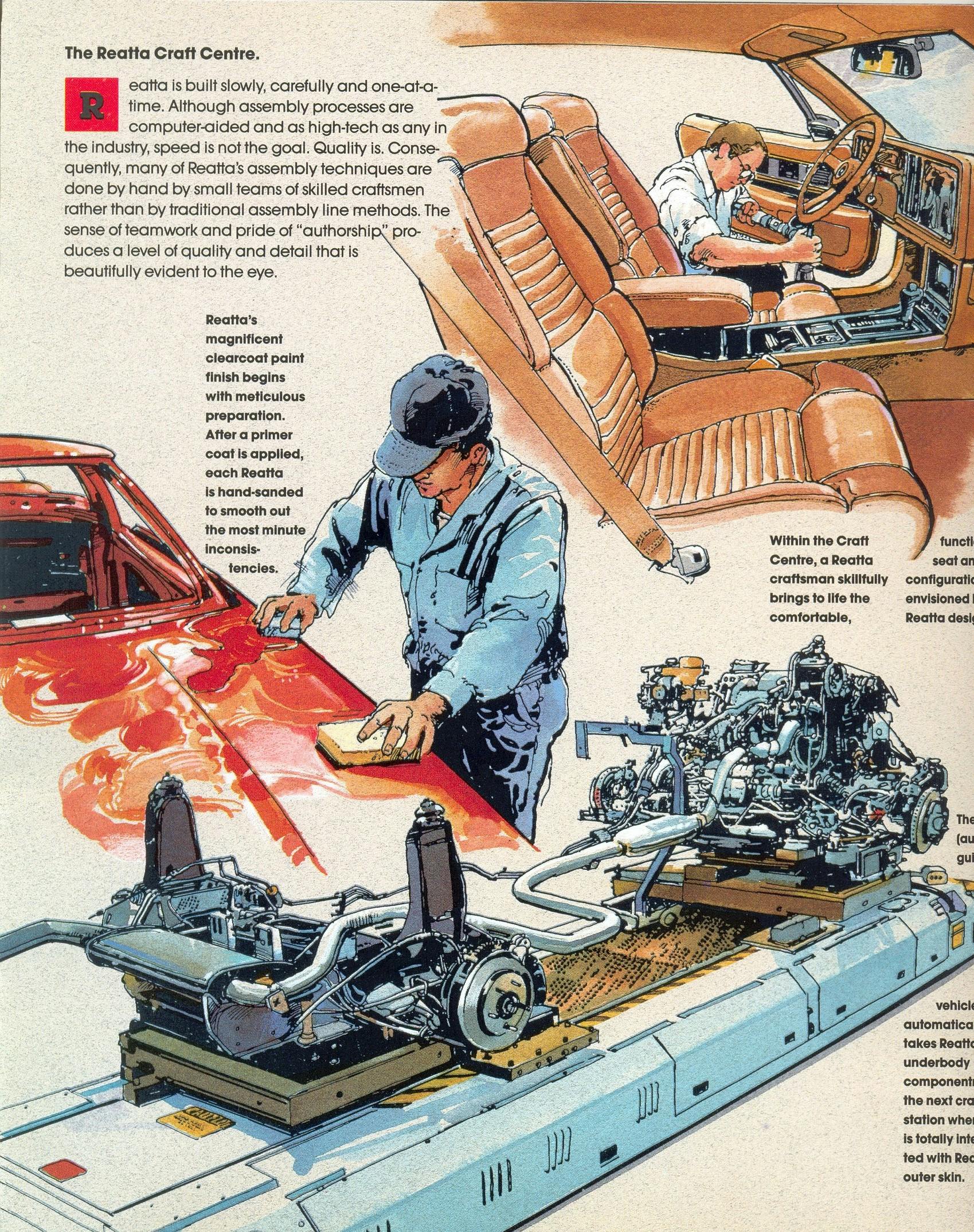
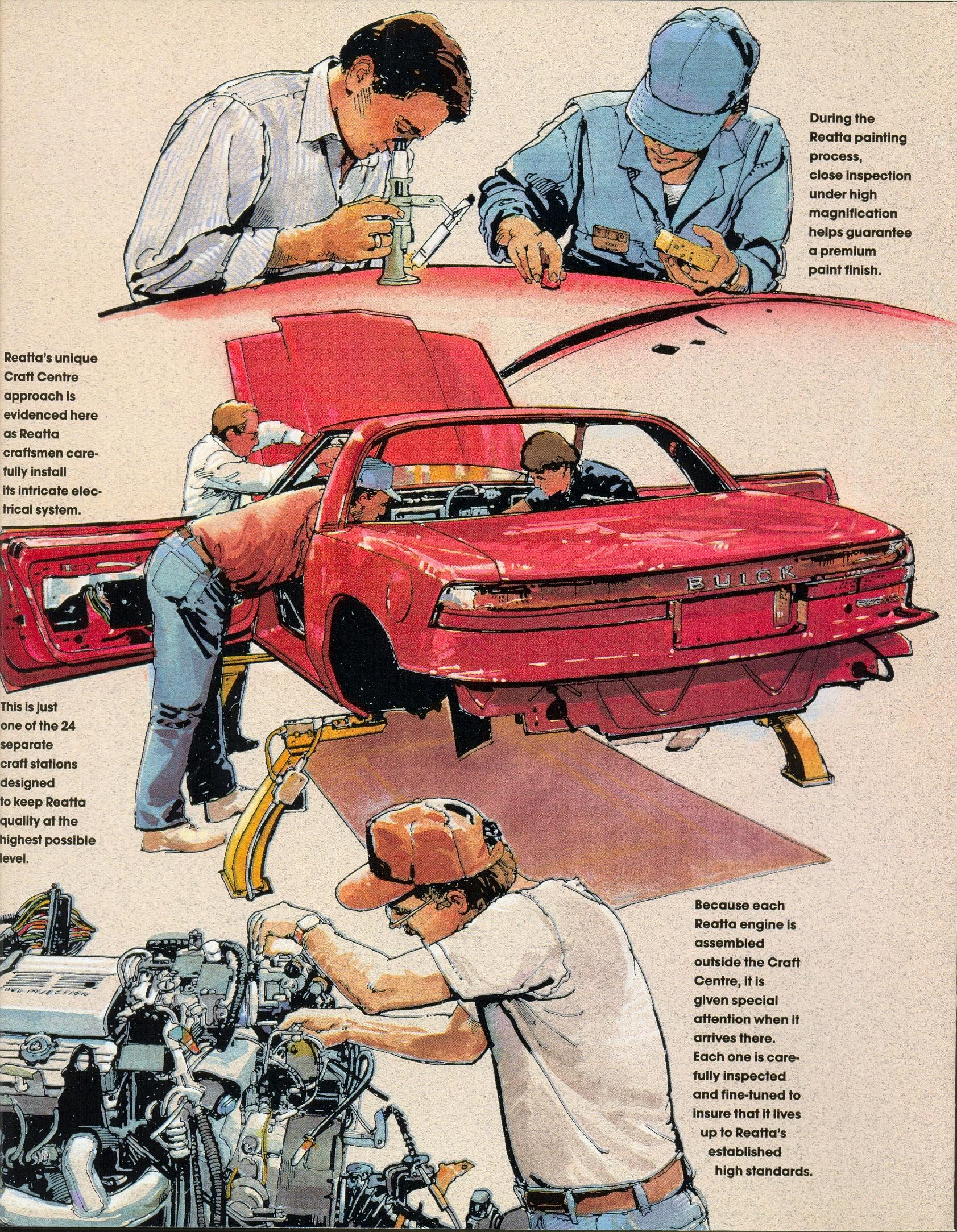
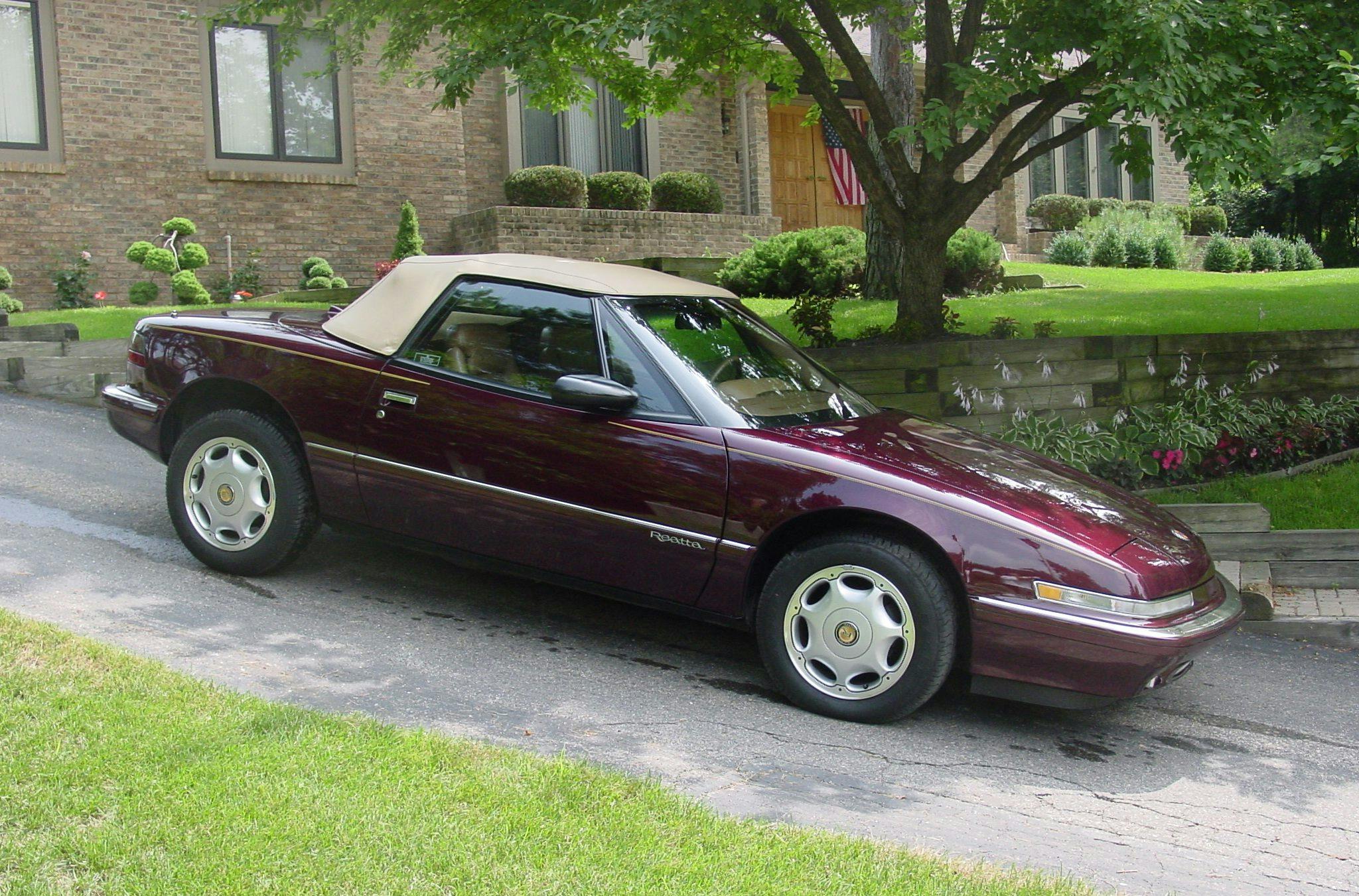



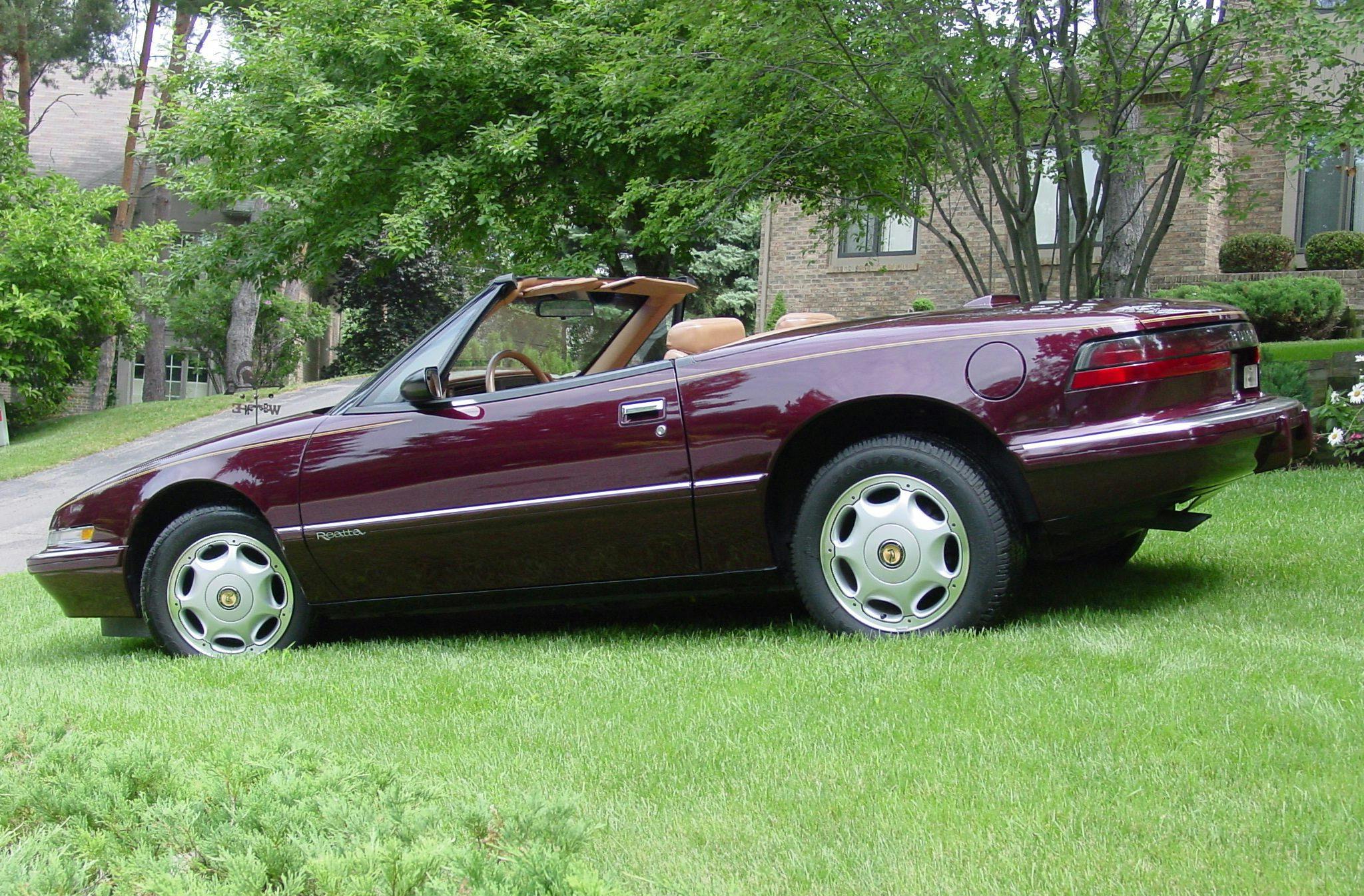
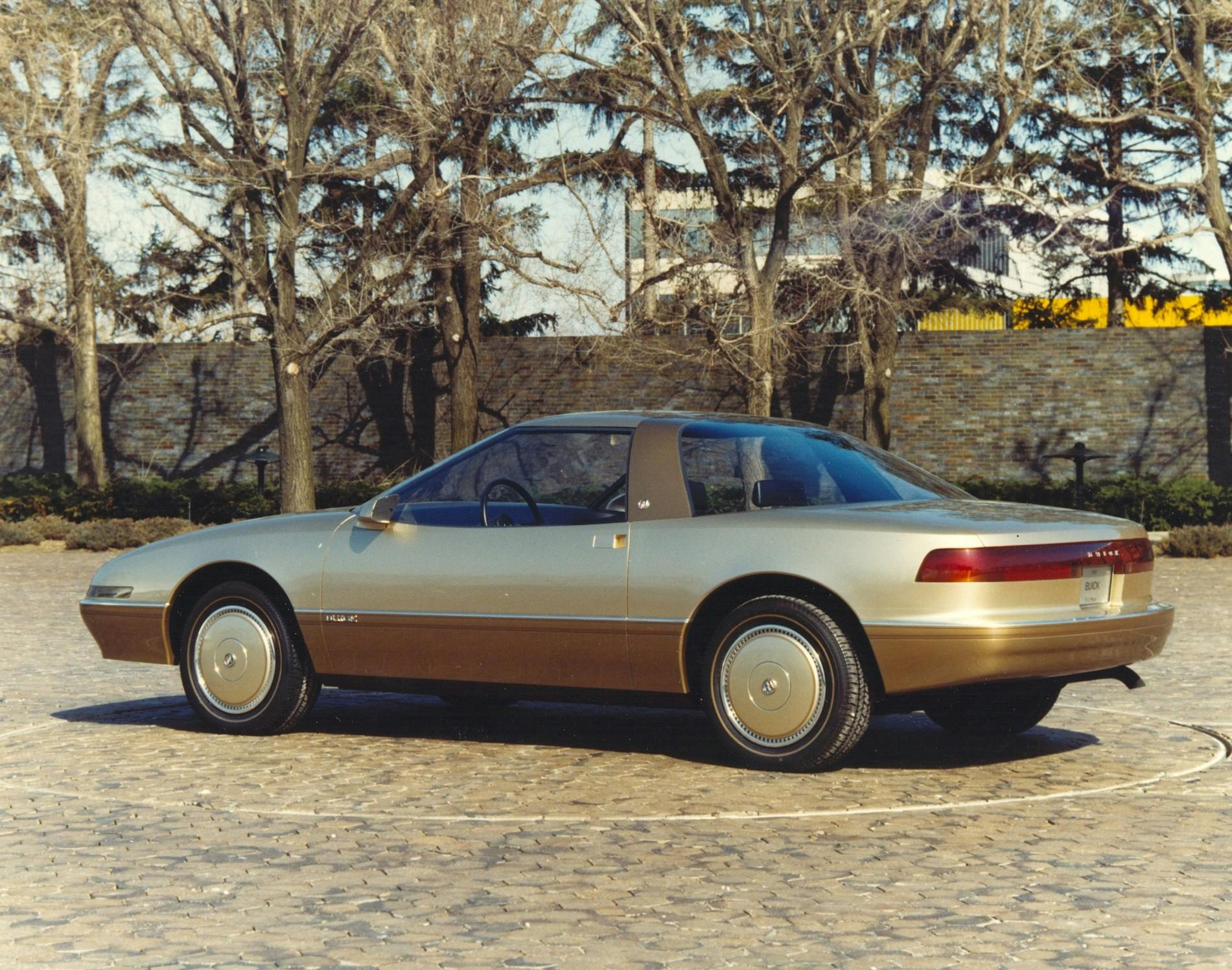
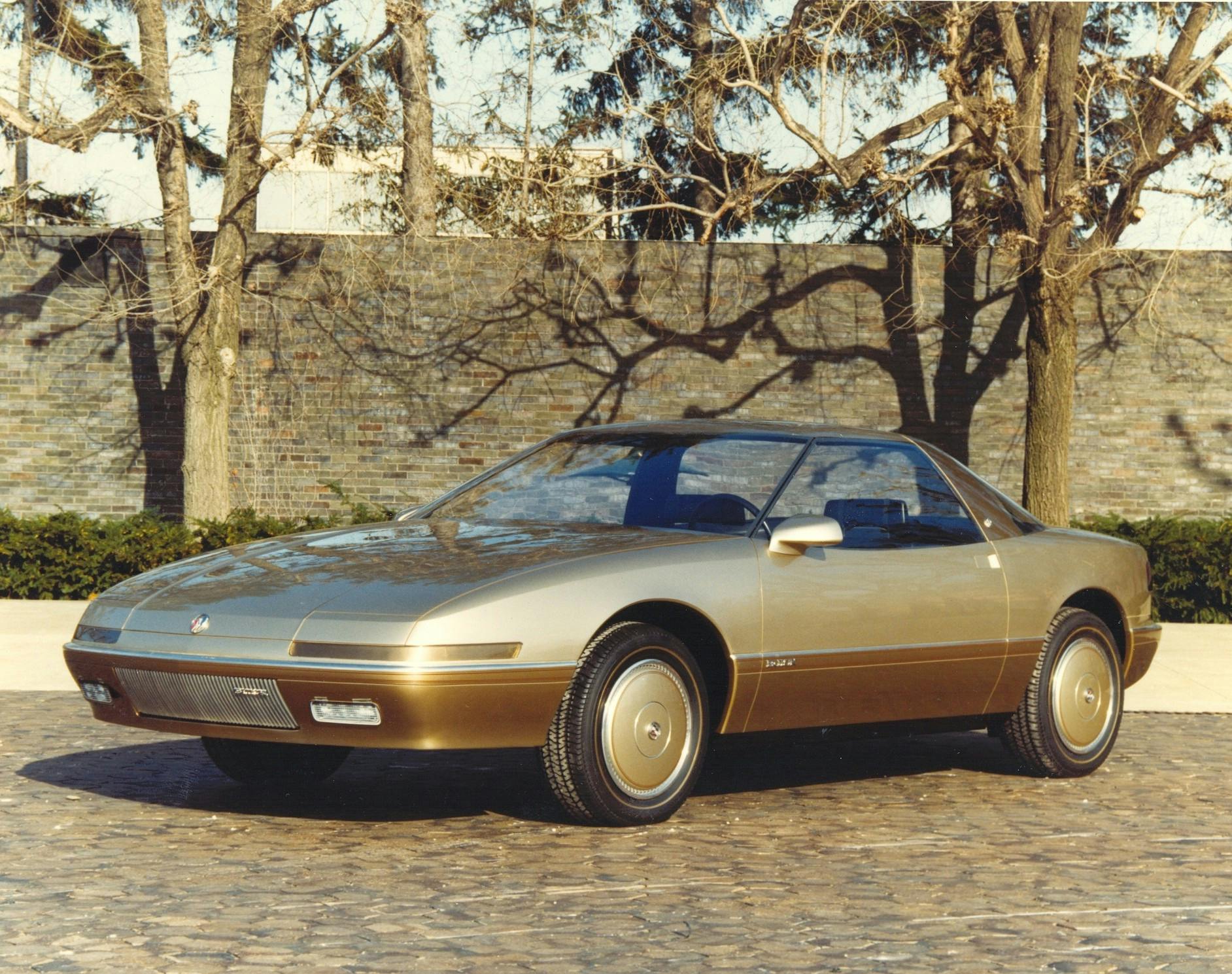
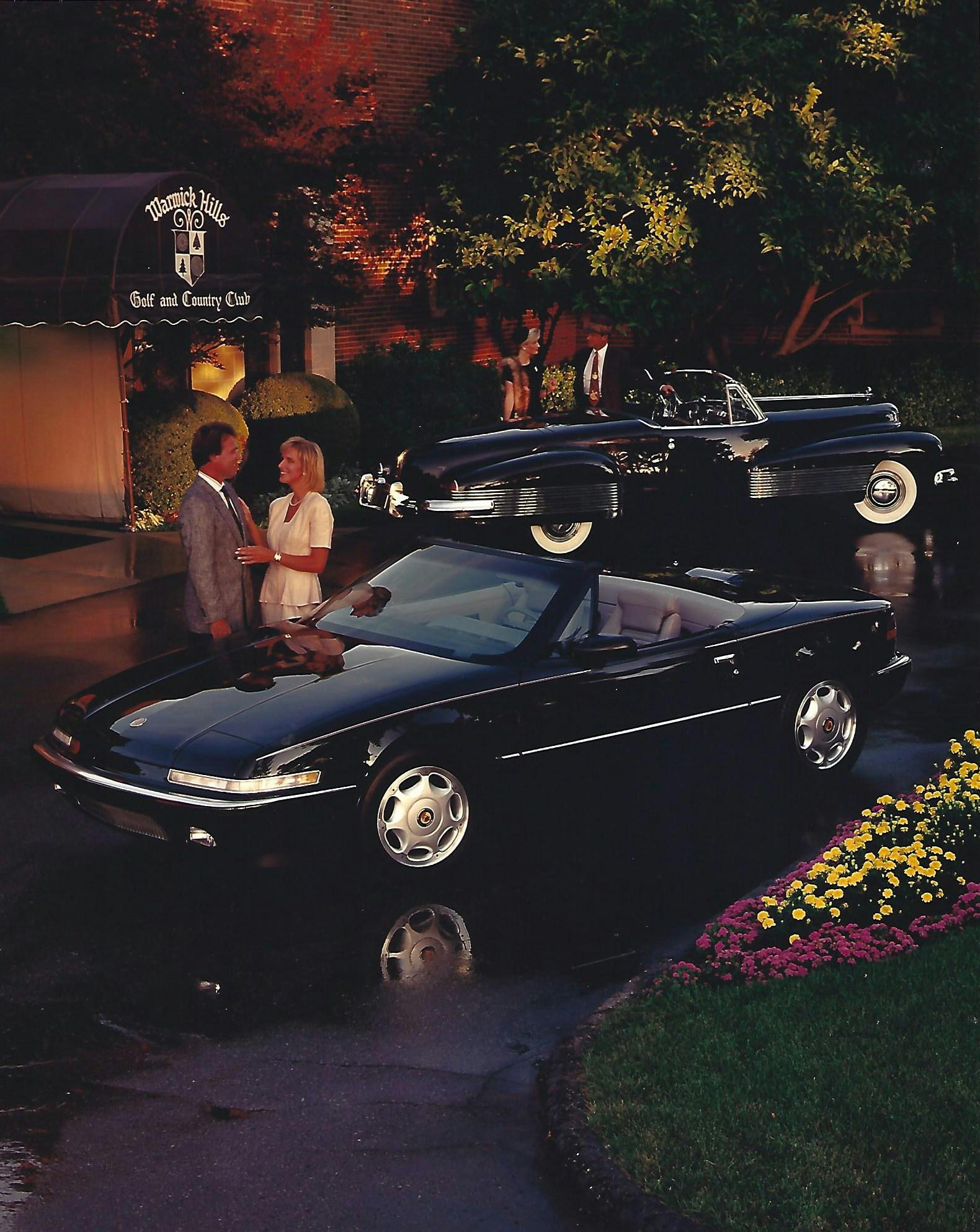


MINT CAR, DEPENDABLE CAR, INTERSTING CAR (1988) GREAT HANDLING CAR, ATTRACTIVE SPORTY/LUXURY CAR….of course there’s gonna be that *Who the Hell Knows How To Repair/Diagnose the Electronic Control System*??!!!! NOT BUICK OR G.M, In 2023!!!
ANYBODY: IDEAS, SUGGESTIONS, RECOMMENDATIONS??!!!!